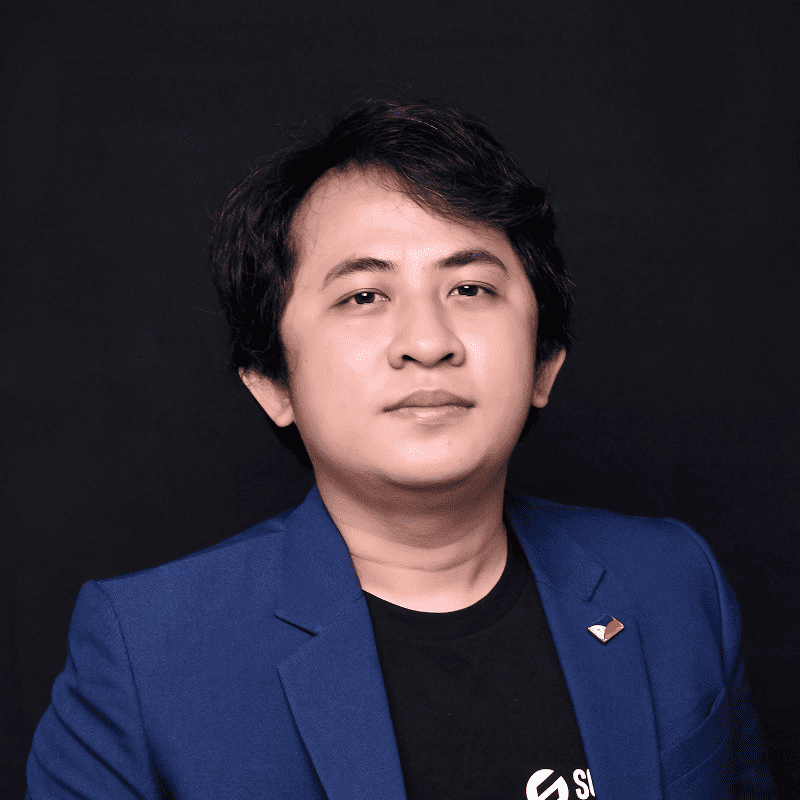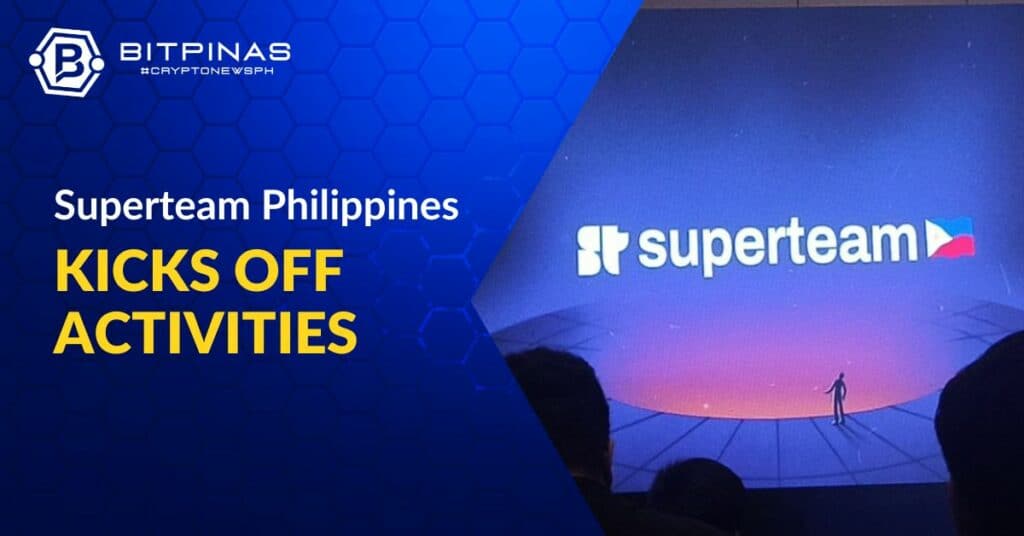Co-founder of The BLOKC, Eli Becislao, reveals how they will onboard new builders into the Hiraya Network following the recent Philippine launch of the Aptos Foundation’s new local initiative.
The BLOKC is the organization leading the Hiraya network in the country. Moreover, the people behind The BLOKC are also involved with Solana’s Superteam Philippines.
Ensuring a Fresh Talent Pool

In an interview with BitPinas, Becislao explained that while they are engaged with both Superteam and the Hiraya Network, the latter takes a unique approach to onboarding talent in the web3 space.
- He stated that Hiraya Network implements a different approach to hackathons and bootcamps.
- Unlike Superteam, where participation was free, Hiraya requires participants to pay a refundable amount, ensuring they have “skin in the game” and are more committed to completing the program.
“For Hiraya, we’ll be taking in a smaller group of highly motivated developers who are really eager to learn. They have to put in a specific amount of money, and after completing the program, they not only get their money back, but they’re also rewarded,” he shared.
Becislao added that Hiraya Network is exploring the possibility of returning twice the amount the developers staked or providing an additional incentive, along with equipping them with practical skills for Aptos development.
- In addition, participants will also earn a certification to enhance their job applications.
- Moreover, he stressed that Hiraya Network ensures a fresh talent pool by targeting Web2 projects and helping them transition into web3.
“These are not the same builders that we had for Superteam. It’s an entirely new batch of builders and projects. Expect to see Web2 projects exploring web3, and those will be the builders and projects that we’ll be adding to Hiraya,” Becislao concluded.
Different from Approach Compared to Superteam

Unlike Superteam, Hiraya focuses on introducing fresh talent, fostering sustainable onboarding, and driving economic impact within the ecosystem.
“Currently, our plans for Hiraya are completely different compared to the plans and activations that were done for Superteam. Before, with Superteam, we hosted several hackathons… From there, doon sa mga hackathons na ‘yon (from those hackathons) and bootcamps, we built a top-of-the-funnel pipeline. So from that pipeline, the projects that became part of Superteam—those that received grants, won hackathons, etc.—were filtered in,” he stated.
Becislao highlighted that Hiraya Network takes a different approach by partnering with technology business incubators (TBIs) to onboard new talent.
TBIs:
- SCALE NCR – A consortium of TBIs in Metro Manila
- IDEA – Based in Mindanao
- SILI TBI – Located in Bicol
- UMAsenso Hub – Affiliated with the University of Mindanao
He noted that by working with these incubators, Hiraya aims to tap into their existing talent pools and identify promising projects that can be transitioned into the web3 space.
Distinct Objectives and Success Metrics

Hiraya Network’s key performance indicators (KPIs) differ from those of Superteam. While Hiraya and Superteam are both talent onboarding initiatives in the web3 space, they serve different ecosystems and take distinct approaches.
Superteam was built to support the Solana ecosystem, with a primary focus on producing new founders and builders. On the other hand, Hiraya is designed to drive economic impact by helping Filipino professionals secure roles within the Aptos ecosystem.
“It doesn’t matter if we produce projects or not. Even if we don’t have startups or projects getting funded, we can still hit our KPI. If we’re able to deploy talents who get hired and work within the Aptos ecosystem, we’re already meeting our metrics,” Becislao said.
He also emphasized that while there may be some overlap between Superteam and Hiraya Network, their structure, KPIs, and approach are fundamentally different.
What is the Hiraya Network?

Hiraya Network serves as the official hub for talent, builders, and founders within the Aptos ecosystem in the Philippines, backed by The BLOKC (The Blockchain Lead Organization & Knowledge Center).
Also read: Aptos Foundation Funds Hiraya Network to Boost Blockchain Talent and Startups in the Philippines
Full Transcript
Difference from Superteam Philippines
BitPinas Reporter: Last year, The BLOKC launched a talent layer for the Solana blockchain called Superteam, which provides grants and incentivizes builders to build on Solana. Now that The BLOKC is launching a new talent layer (called Hiraya) for the Aptos blockchain, how can you ensure that this won’t involve the same group of builders moving from just one grant to the next?
Eli Becislao, The BLOKC: So currently, our plans for Hiraya are completely different compared to the plans and activations that were done for Superteam.
Before, with Superteam, we hosted several hackathons. So may mga iba’t ibang hackathons (there were different hackathons). From there, doon sa mga hackathons na ‘yon (from those hackathons) and bootcamps, we built a top-of-the-funnel pipeline. So from that pipeline, the projects that became part of Superteam—those that received grants, won hackathons, etc.—were filtered in.
For Hiraya Network and Aptos, it’s a different approach. What we’re doing right now is forming close ties with technology business incubators (TBIs). We’re currently working with SCALE NCR, a consortium of TBIs in Metro Manila. We’re also collaborating with other TBIs, such as:
- IDEA in Mindanao
- SILI TBI in Bicol
- UMAsenso Hub of the University of Mindanao
The idea is to tap into the existing cohorts of these TBIs and identify projects that could be bridged or integrated into web3.
Different KPI for Hiraya Network
The reason why we’re taking this approach is because the KPI for Hiraya is different from the KPI for Superteam.
- Superteam KPI: Producing talents, builders, and founders.
- Hiraya KPI: Economic impact.
It doesn’t matter if we produce projects or not. Even if we don’t have startups or projects getting funded, we can still hit our KPI. If we’re able to deploy talents who get hired and work within the Aptos ecosystem, we’re already meeting our metrics.
If you compare this with Superteam, the key metrics were the number of projects building on Solana and the number of developers developing on Solana. That’s what we tracked for Superteam.
For Hiraya, it’s different. We can hit our metrics by simply having Filipino talents working on Aptos ecosystem projects. It doesn’t matter what project—as long as they’re working within the Aptos ecosystem, we hit the metrics.
How Do We Ensure It’s Not the Same Group of Builders?
To ensure that it’s not the same group of builders who received grants from Superteam transitioning to Hiraya, we’ve implemented a different approach to hackathons and bootcamps.
Before, in Superteam, our bootcamps were free. But for Hiraya, participants have to spend a specific amount, which will be returned to them after they finish the program.
This way, they have skin in the game. In the past, we’d get many participants, but the problem was that a lot of them didn’t finish the program. For example, if we started with 50 participants, only about 20 would finish.
Now, for Hiraya, we’ll be taking in a smaller group of highly motivated developers who are really eager to learn. They have to put in a specific amount of money, and after completing the program, they not only get their money back, but they’re also rewarded.
We’re considering doubling the amount they staked or giving them an additional reward, aside from equipping them with hard skills that allow them to develop on Aptos. They will also receive a certification that they can use when applying for jobs.
Focusing on Web2 to Web3 Projects
Another way we ensure that it’s not the same group of builders is by targeting web2 projects that can be bridged to web3. We’re looking at existing web2 projects and introducing them to the web3 space.
These are not the same builders that we had for Superteam. It’s an entirely new batch of builders and projects. Expect to see web2 projects exploring web3, and those will be the builders and projects that we’ll be adding to Hiraya.
Different Goals, Different KPIs
It’s not conflicting because the KPI, the approach, and the goals are all different.
Superteam was founder-centric, focused on producing founders and builders. While Hiraya is a talent, builder, and founder hub, its main focus is on economic impact.
If we can’t produce projects in the Philippines right now—because we’re not yet at that level like other countries—we’re still hitting our KPIs if we can deploy Filipino talents into the Aptos ecosystem.
So, the structure is different, the KPIs are different, and the approach is different. It may overlap a little, but the end goals are completely different.
This article is published on BitPinas: Interview: How Hiraya Network’s Approach to Web3 Talent Differs from Superteam Philippines
What else is happening in Crypto Philippines and beyond?

